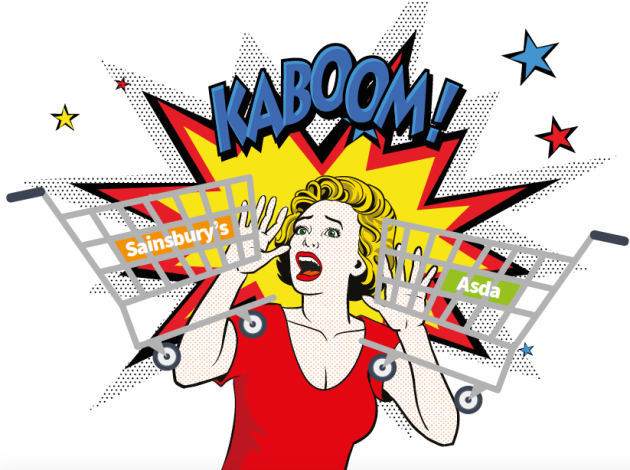
We're in the money?
An increasingly competitive retail environment has led to yet another mega-merger, this time between Asda and Sainsbury’s. We ask what this new giant force could have in store for wine
Sainsbury’s CEO Mike Coupe was in a musical mood earlier this month. His choice of song lyrics, We’re in the Money, taken from the golden era of Hollywood, was caught on camera between interviews ahead of the proposed Sainsbury’s and Asda merger.
It was, in Coupe’s own words, “unfortunate”. It has also led us to ask, who is in the money, exactly?
As Tim Atkin MW points out in his monthly column, it may not be suppliers, who look set to be further squeezed by Coupe’s promise to cut prices of everyday products by around 10%, with £500 million earmarked in cost savings.
The way Coupe proposes to achieve this is vague at best. “Improved efficiency”, it has been suggested, could claw back savings in the supply chain by streamlining transport operations and back-end processing.
But this is unlikely to reach £500 million, leaving a shortfall which will inevitably come down hard on ranges and suppliers.
“If suppliers are going to have to come up with the savings, then we’ll see consolidation in the supply base,” Austin Sugarman, boss of Fine Foods International, said in conversation with the BBC.
When number crunching and cost savings are at the heart of a merger such as this, further range consolidation is inevitable. So is the erosion of whisker-thin margins for wine suppliers which are already offering their “best prices” to the supermarkets, according to Hallgarten Druitt & Novum Wines MD Andrew Bewes.
It’s a tale perhaps not as old as time, but as old as retail and, for wine, it won’t be the top 10 brands that suffer. It will be “the colourful end of the range – smaller producers who will have to share limited number of opportunities,” says Bewes, whose core portfolio is mid-sized, family-owned producers.
“It’s not the first time we’ve seen this happen. With consolidation, low prices and cost savings are prioritised over choice – always a bad move for the wine and spirits sector.”
This picture may seem bleak, but it is nothing new for wines and spirits, which have adapted to a massively changing retail landscape over the past 25 years, during which time Bewes estimates upwards of 10,000 SKUs have disappeared from the high street.
↓
Survival of the fittest
At the heart of it all is a need to create economies of scale to compete with the likes of Tesco, which currently holds a 27.6% majority share of the UK grocery market (Kantar Worldpanel).
Asda and Sainsbury’s bosses have promised to achieve a combined market share of 31.4% without closing any of the current 2,800 Asda, Sainsbury’s and Argos stores, and by maintaining a workforce of 330,000.
This is doable, argues Broadland Wineries MD Mark Lansley, and could – with Asda’s differing focuses and minimal store overlap – help to strengthen the business for the future.
“Businesses have to be profitable, and have to be shaped to attract consumers,” he says. “So, as well as price, this means ranges and service online have to keep on improving.”
Combining resources will enable Asda and Sainsbury’s to compete in the growing online space – particularly now that Amazon is widely tipped to be preparing to re-enter the market with a bang after selling its wine business last year.
For now, all of this remains speculation.
The deal needs to be given the green light from the competition powers before it can hope to meet its proposed competition date in late 2019.
If waved through, it means that wine will perhaps be forced, yet again, to try that little bit harder to eke out routes to market and margin.
At the same time, however, the product mix on the market has improved massively since the heyday of Thresher, Victoria Wine and Unwins, with innovation constantly giving consumers more reasons to invest time and money in wine.
“It’s tough out there,” says Bewes. “Wine is suffering in the economy, but at the same time, choice in wine has never been better. The difference compared to 25 years ago is that customers are no longer loyal to one shop.
“The consumer is a lot more agile – and wine needs to be part of that.”
Keywords:
- Asda
- Suppliers
- Sainsbury's
- MW
- million
- Merger
- savings
- cost
- coupe
- money
- consolidation
- cost savings
- thin margins
- BBC




